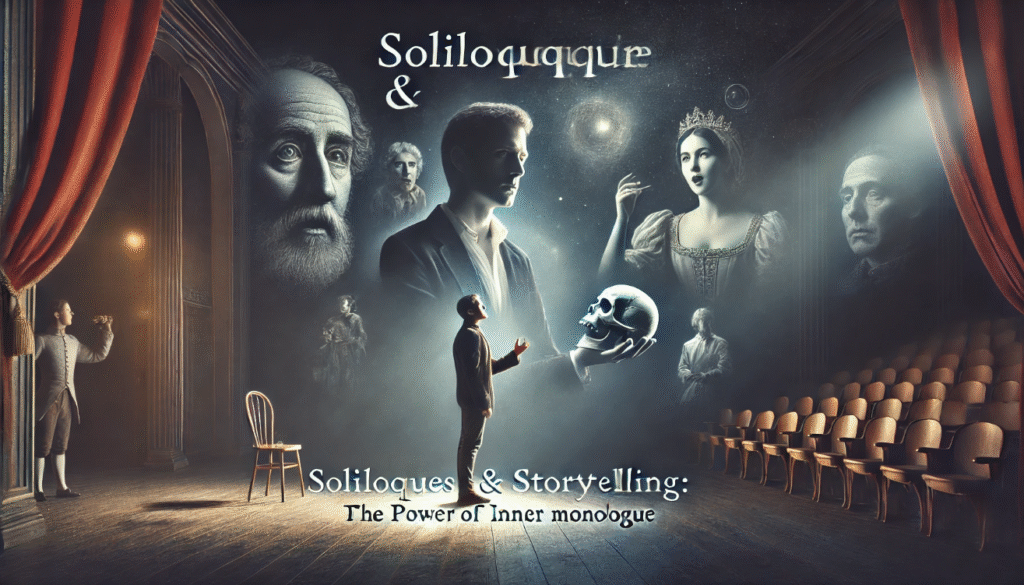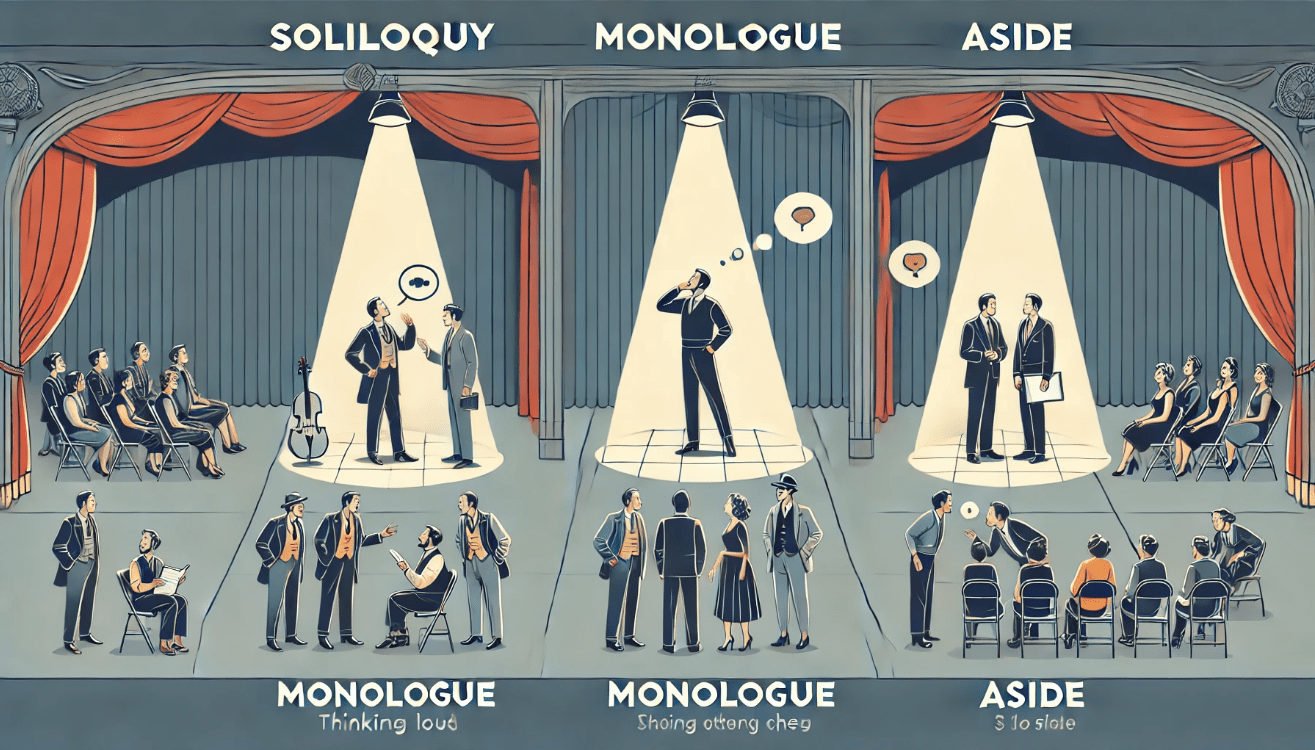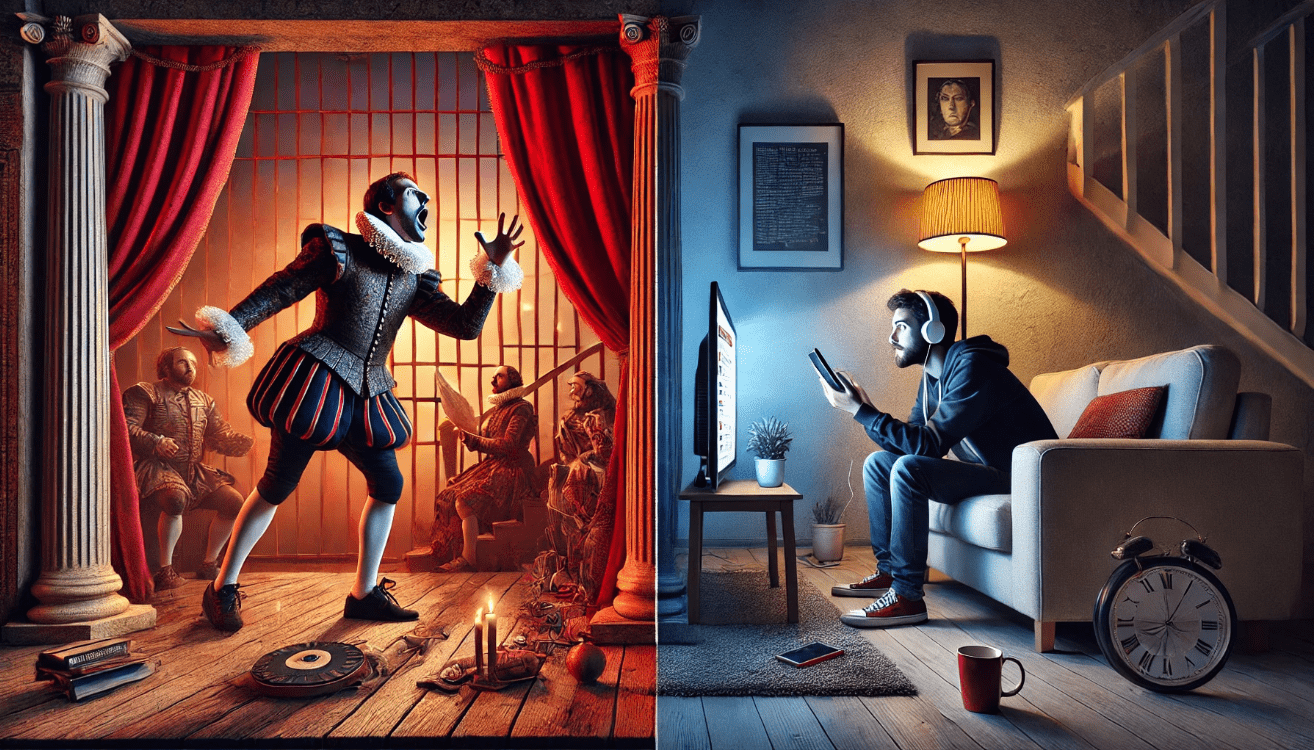
Soliloquies and Their Effect on Character Development: How Inner Monologues Reveal Hidden Motivations and Drive Storytelling
Have you ever watched a character step into silence—alone, eyes searching the void—and suddenly speak their truth out loud? 🎭 That’s the power of a soliloquy. It’s in these raw, unfiltered moments that we truly meet the character behind the mask. Whether you’re analyzing Shakespeare or crafting your own stories, understanding soliloquies and their effect on character development can unlock deeper emotional insight and storytelling mastery.
Too often, readers and writers overlook these inner monologues, missing the chance to explore a character’s hidden motivations, moral dilemmas, and emotional evolution. But soliloquies aren’t just theatrical flair—they’re storytelling gold.
Table of Contents
Toggle1.Why Soliloquies Still Matter Today
In a world full of fast-paced dialogue, plot twists, and visual effects, it’s easy to overlook one of the most powerful storytelling tools ever created: the soliloquy. Yet, these quiet moments—where a character speaks their thoughts aloud—are often where the real drama unfolds. 🎭

Soliloquies and their effect on character development remain just as relevant today as they were in Shakespeare’s time. Why? Because they offer a rare and intimate look inside a character’s mind. While actions show us what a character does, soliloquies reveal why they do it.
Whether you’re a student analyzing literature, a writer developing a deeper character arc, or a teacher trying to explain emotional complexity to your class, soliloquies help decode characters’ hidden motivations, inner conflicts, and emotional growth.
2. What is a Soliloquy? 🤔
A soliloquy is a powerful storytelling device where a character speaks their thoughts out loud, usually while alone on stage or screen. It’s not meant for the other characters to hear—only the audience gets this intimate peek into the character’s mind.
🔍 Soliloquy vs. Monologue vs. Aside
These terms often get mixed up, so let’s clear the confusion:

- Soliloquy: The character is alone, revealing inner thoughts to the audience.
- Monologue: A long speech to other characters (not always personal or reflective).
- Aside: A brief remark to the audience, while others are on stage but “can’t hear” it.
🎭 Why Are Soliloquies Important?
Soliloquies help us:
- Understand what a character is really thinking or feeling
- See their inner conflict, doubts, or secret desires
- Witness key turning points in their emotional journey
Without soliloquies, we might never know Hamlet is struggling with the idea of existence, or that Lady Macbeth is unraveling from guilt. These inner monologues connect us to the soul of the story.
3. Why Soliloquies Are a Powerful Tool for Character Development 💡
Soliloquies aren’t just poetic speeches—they’re one of the most effective ways to develop deep, emotionally complex characters. Whether you’re studying literature or writing your own story, understanding how soliloquies shape a character’s journey is key to unlocking meaningful storytelling.
🎭 1. They Reveal a Character’s True Thoughts and Feelings
In regular dialogue, characters often hide what they truly think. But in a soliloquy, the mask comes off.
These moments let us hear:
- Hidden fears
- Desperate hopes
- Conflicted emotions
- Honest reflections
⚔️ 2. They Show Internal Conflict
Great characters aren’t perfect—they wrestle with doubts and moral dilemmas. Soliloquies are where those struggles come to life.

Think of:
- Hamlet debating whether to live or die
- Macbeth torn between ambition and guilt
📈 3. They Mark Turning Points in a Character’s Arc
Many soliloquies happen at key moments—just before a decision, a betrayal, or a transformation.
These speeches often:
- Signal a shift in motivation
- Reveal a new realization
- Lead to action (or inaction)
❤️ 4. They Help Audiences Empathize
Soliloquies create a personal bond between the character and the audience. Even if the character is flawed—or even villainous—we understand why they do what they do.
Example: Shakespeare’s Richard III uses soliloquies to charm us into his twisted world. We don’t approve of him, but we get him.
🔍 5. They Add Depth Without Exposition
Instead of dumping background information through narration or clunky dialogue, soliloquies let the audience discover a character’s inner world naturally.
4. How Inner Monologues Drive the Plot and Emotional Engagement 🎯
Soliloquies aren’t just tools for character expression—they’re essential engines that move the plot forward and deepen the audience’s emotional connection. When a character speaks their inner truth, it doesn’t just reveal something—it often changes everything.
Here’s how inner monologues shape both story and feeling👇
🧭 1. They Foreshadow Major Decisions
Soliloquies give the audience a sneak peek into what might happen next. When a character questions or plans something privately, it often hints at an upcoming twist.
⚖️ 2. They Show Moral Dilemmas and Emotional Conflict
Plot isn’t just action—it’s why a character acts. Soliloquies let us witness the emotional weight behind every move.
🧠 3. They Reveal Hidden Motivations
A character may say one thing in dialogue but think something entirely different in a soliloquy. That gap between outer behavior and inner thought is rich with story potential.
Takeaway: When writing fiction, a well-placed inner monologue can justify a surprising action or make a complex character feel more human.
🎢 4. They Deepen Emotional Engagement with the Audience
Audiences connect most deeply when they feel close to a character’s mind. Soliloquies create that bond by inviting us into private thoughts we’d never otherwise hear.
✅ Why it works:
- Builds empathy 😢
- Creates suspense 😮
- Sparks curiosity 🤔
5. Soliloquies in Action: Famous Examples Across Media 🎬📚
Soliloquies aren’t just confined to old plays and dusty textbooks—they’re alive and well in today’s stories, from Shakespearean tragedies to modern movies and TV shows. Whether you’re analyzing a classic or writing your own narrative, studying great soliloquies can help you understand how inner monologues drive character development and deepen audience connection.
Nobody used soliloquies better than Shakespeare. His characters often stand alone on stage, wrestling with decisions, guilt, ambition, or love—giving the audience full access to their emotional state.
Examples:
- Hamlet – “To be or not to be”
Why it works: Reveals Hamlet’s deep existential crisis. We see his fear, indecision, and internal logic. It’s a turning point in his emotional journey. - Macbeth – “Is this a dagger which I see before me?”
Why it works: Visualizes Macbeth’s descent into murder and madness. The soliloquy externalizes his guilt and ambition in a poetic yet relatable way. - Lady Macbeth – “Out, damned spot!”
Why it works: Shows how guilt consumes her after the crime. Her unraveling mind is laid bare, helping the audience understand her tragic fall.
🎥 Modern Film and TV: Soliloquies Reimagined as Voiceovers and Vlogs
Today’s writers often use voiceovers, video diaries, or inner narration as modern-day soliloquies. These tools offer the same insight into a character’s thoughts—just in updated formats.

Examples:
- Dexter (TV Series)
Why it works: Dexter’s voiceovers reveal his hidden double life and internal code. Without these monologues, he’d just seem cold or emotionless. Instead, we empathize with him—even when we disagree with his actions. - Fleabag (TV Series)
Why it works: The protagonist breaks the fourth wall, talking directly to the viewer. These asides function like soliloquies, giving us real-time access to her fears, sarcasm, guilt, and moments of vulnerability. - Joker (2019 Film)
Why it works: Arthur’s notebook entries, monologues, and voiceovers expose his isolation and growing instability. These inner glimpses help us understand the man behind the mask—and why he spirals into violence.
📚 Literature: Stream of Consciousness as Internal Soliloquy
Some novels use stream-of-consciousness to mimic soliloquies—letting readers live inside a character’s thoughts with no filter.
Examples:
- Mrs. Dalloway by Virginia Woolf
Why it works: We experience Clarissa’s memories, emotions, and shifting mental states in real time. Her interior monologue is rich with meaning—even when “nothing” is happening. - The Catcher in the Rye by J.D. Salinger
Why it works: Holden Caulfield’s rambling thoughts function like one long soliloquy. We connect with his loneliness, confusion, and inner rebellion because he constantly lets us into his mind.
6. How to Analyze a Soliloquy (Step-by-Step Guide) 🕵️♀️🎭
Analyzing a soliloquy doesn’t have to be intimidating. Whether you’re a student writing a literature essay or a writer trying to understand character psychology, this step-by-step guide will help you unlock the meaning behind the monologue—and reveal how it drives character development.
Let’s break it down into simple, actionable steps 👇

✅ Step 1: Identify the Speaker and Context
Start by asking:
- Who is speaking?
- When and where does this soliloquy occur in the story or play?
💬 Step 2: Read It Out Loud (Seriously!)
Soliloquies are meant to be spoken. Reading aloud helps you hear the tone, rhythm, and emotional flow.
🔍 Step 3: Identify the Character’s Main Emotion
Ask:
- What is the dominant feeling—fear, guilt, love, confusion, ambition?
- Does the emotion stay the same or shift during the soliloquy?
🎯 Step 4: Look for Conflict and Dilemma
A great soliloquy often centers on a problem or choice. Pinpoint the tension between what the character wants and what’s holding them back.
Examples:
- Hamlet: “Should I live or die?”
- Macbeth: “Should I kill the king or stay loyal?”
✨ Step 5: Spot Literary Devices That Reveal Psychology
Look for:
- Metaphors (How is the character comparing feelings to images?)
- Repetition (What thoughts are they stuck on?)
- Irony (Do they say one thing but mean another?)
- Imagery (What visuals reflect their mindset?)
🧩 Step 6: Ask How the Soliloquy Changes Your Understanding
After reading it, ask:
- What did I learn about the character that I didn’t know before?
- How does this soliloquy change their role or direction in the story?
7. Writing Strong Soliloquies in Fiction or Drama ✍️🎭
Want to write a soliloquy that grabs attention and reveals your character’s soul? Whether you’re crafting a stage play, screenplay, or novel, a powerful soliloquy can transform your character from flat to unforgettable.
🎯 1. Know Your Character’s Inner Conflict
A great soliloquy is driven by emotional tension. Before you write a single word, ask yourself:
- What is the character struggling with?
- What secret are they afraid to share with others?
- What choice or realization are they working through?
💬 2. Write in Their Natural Voice
Soliloquies should feel intimate and authentic, not like formal speeches. Use the same language, tone, and rhythm your character would naturally use in thought.
✅ Use:
- Fragments
- Repetition
- Rhetorical questions
- Emotional outbursts
🚫 Avoid:
⚖️ 3. Let Them Contradict Themselves
Real people often feel conflicted—and so should your characters. Let them wrestle with two sides of an issue. Self-doubt, guilt, fear, or ambition can live side by side in the same speech.
🔁 4. Build Tension, Then Release It
A soliloquy often follows this structure:
- Start with confusion or emotional overwhelm
- Build through reasoning, memory, or emotional escalation
- End with a moment of clarity, a decision, or a new question
🎤 5. Use Soliloquies with Purpose
Don’t just throw in a soliloquy to sound dramatic. Ask yourself:
- Does this reveal something new about the character?
- Does it move the story forward?
- Would the audience lose something important without it?
8. Why Soliloquies Still Matter in the AI and Streaming Era 🎭🤖
In today’s fast-paced world of AI-generated scripts, binge-worthy streaming shows, and bite-sized content, you might wonder: Do soliloquies still matter? The answer is a resounding yes—perhaps now more than ever.

1. Authenticity in an Age of Algorithms
With AI increasingly involved in content creation, audiences are craving real emotion and deep character insight. Soliloquies cut through the noise by offering something algorithms can’t fake: raw human introspection. A well-delivered soliloquy gives us access to a character’s soul, not just their surface.
2. Deeper Engagement in Streaming Stories
Modern shows like Breaking Bad, Fleabag, or Mr. Robot cleverly use direct address, voiceover, or internal dialogue—contemporary takes on the classic soliloquy. These moments slow down the story and pull viewers in, creating emotional depth that drives binge-worthy obsession.
Soliloquy-style storytelling helps viewers connect with characters on a personal level, building loyalty and lasting impact.
3. Perfect for Short-Form & AI Summaries
In an era where content gets chunked into reels, summaries, or AI-generated insights, soliloquies shine as self-contained, high-impact monologues. They pack clarity, conflict, and character motivation into tight, quotable moments—ideal for search snippets, reels, and SGE/AI previews. 📱
4. Timeless Human Connection
While tech evolves, human nature doesn’t change. We still wrestle with doubt, desire, fear, and love—the same emotions Shakespeare’s characters voiced centuries ago. Soliloquies remind us we’re not alone in our inner struggles, no matter the era.
Soliloquies aren’t just literary devices from the past—they’re a timeless window into the human soul. Whether in Shakespearean tragedies or today’s binge-worthy dramas, they help us understand what characters truly want, fear, and believe—beyond what they say to others.
By revealing a character’s hidden motivations, soliloquies drive stories forward, deepen emotional impact, and build unforgettable moments that stay with us long after the curtain falls or the credits roll. 🎬
In the age of AI, streaming, and short-form content, soliloquies remind us that the most powerful stories come from within. They offer something that no algorithm can replicate: authentic introspection.
Frequently Asked Questions (FAQs)
1. What is a soliloquy in literature?
A soliloquy is a speech where a character speaks their inner thoughts aloud, usually when they’re alone on stage. It helps the audience understand what the character is truly thinking or feeling, often revealing hidden motivations or conflicts.
2. How do soliloquies help with character development?
Soliloquies allow the audience to see a character’s true emotions, desires, and fears—things they might not say out loud to others. This makes characters feel more real, complex, and relatable.
3. Why are soliloquies still relevant in modern storytelling?
Even in today’s films and shows, soliloquy-style techniques like voiceovers or direct address are used to deepen character insight. They create emotional connections by letting viewers into the character’s mind.
4. What’s the difference between a soliloquy and a monologue?
A soliloquy is spoken when a character is alone, expressing their inner thoughts. A monologue, on the other hand, is spoken to other characters or the audience and may not reveal private emotions.
5. Can soliloquies be used in screenwriting or modern plays?
Yes! Many screenwriters use internal monologue, voiceovers, or character narration—modern versions of soliloquies—to add depth and emotional layers to stories.
6. How do soliloquies reveal a character’s motivation?
Through a soliloquy, a character may admit doubts, fears, secrets, or plans they wouldn’t share publicly. This helps the audience understand what’s truly driving their actions.
7. Are soliloquies only used in Shakespeare's plays?
Not at all. While Shakespeare made them famous, soliloquies appear in all kinds of literature, theater, and even modern film and TV as tools for inner reflection and storytelling.
8. How can I analyze a soliloquy effectively?
Focus on the emotions, tone, word choices, and key themes. Ask what the character reveals about themselves, what they’re struggling with, and how it moves the story forward.
